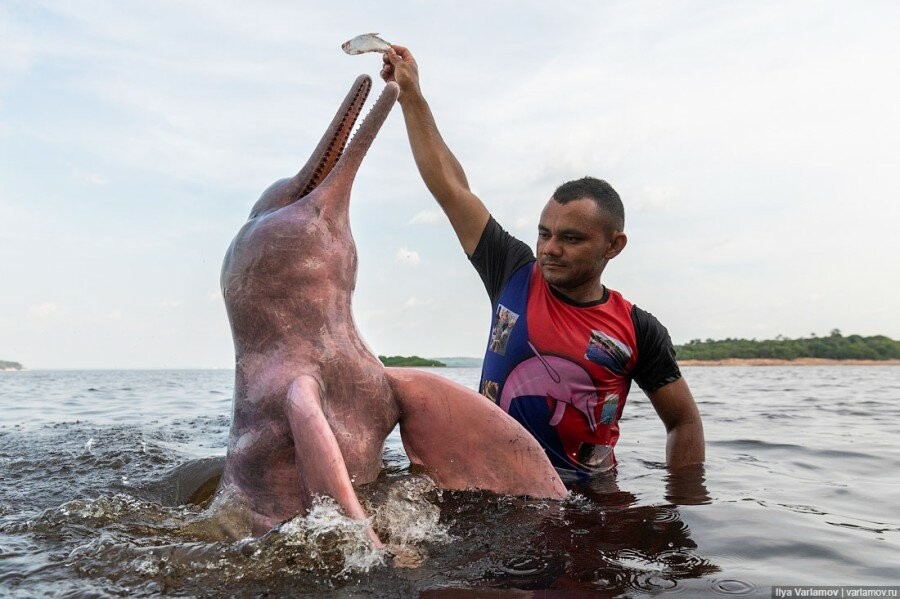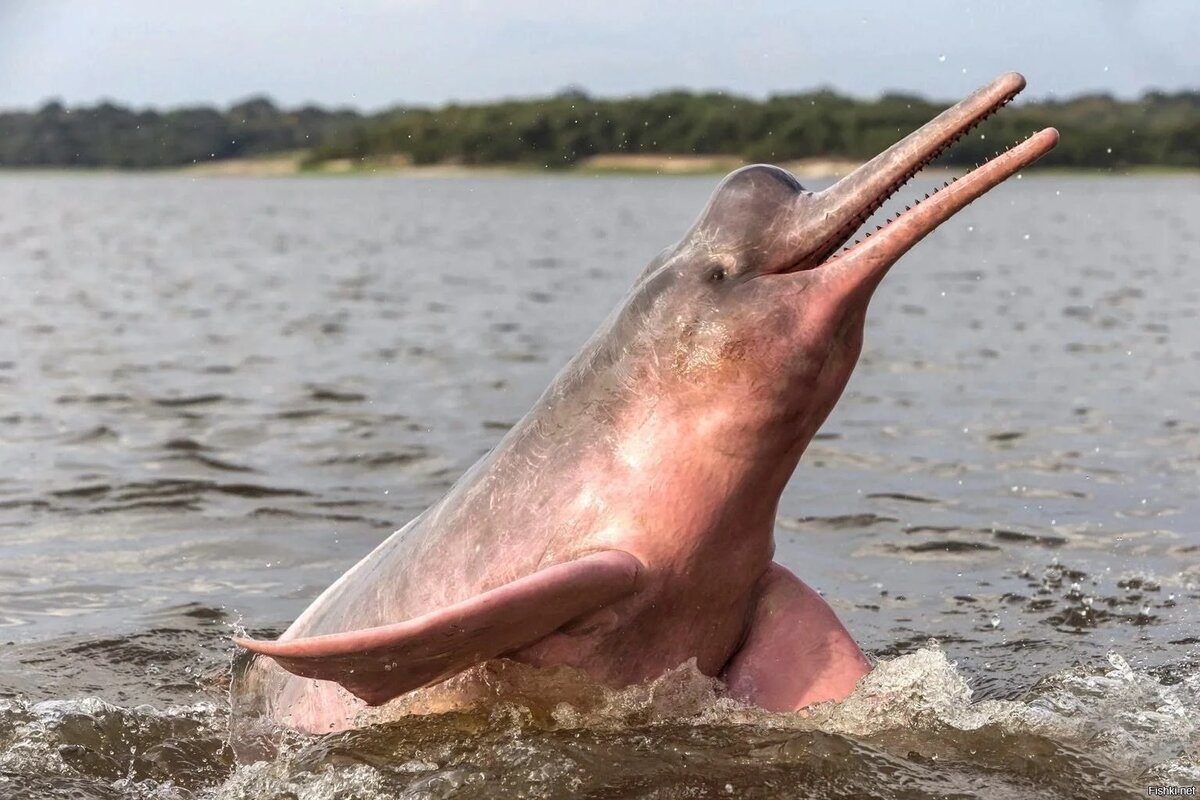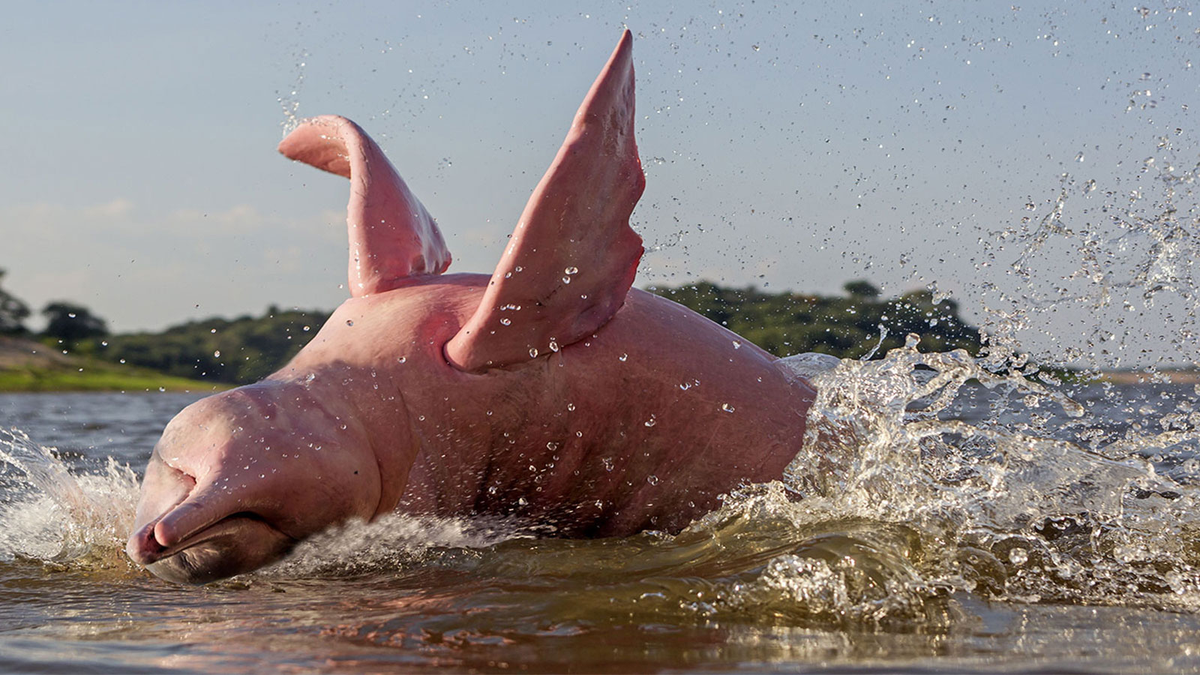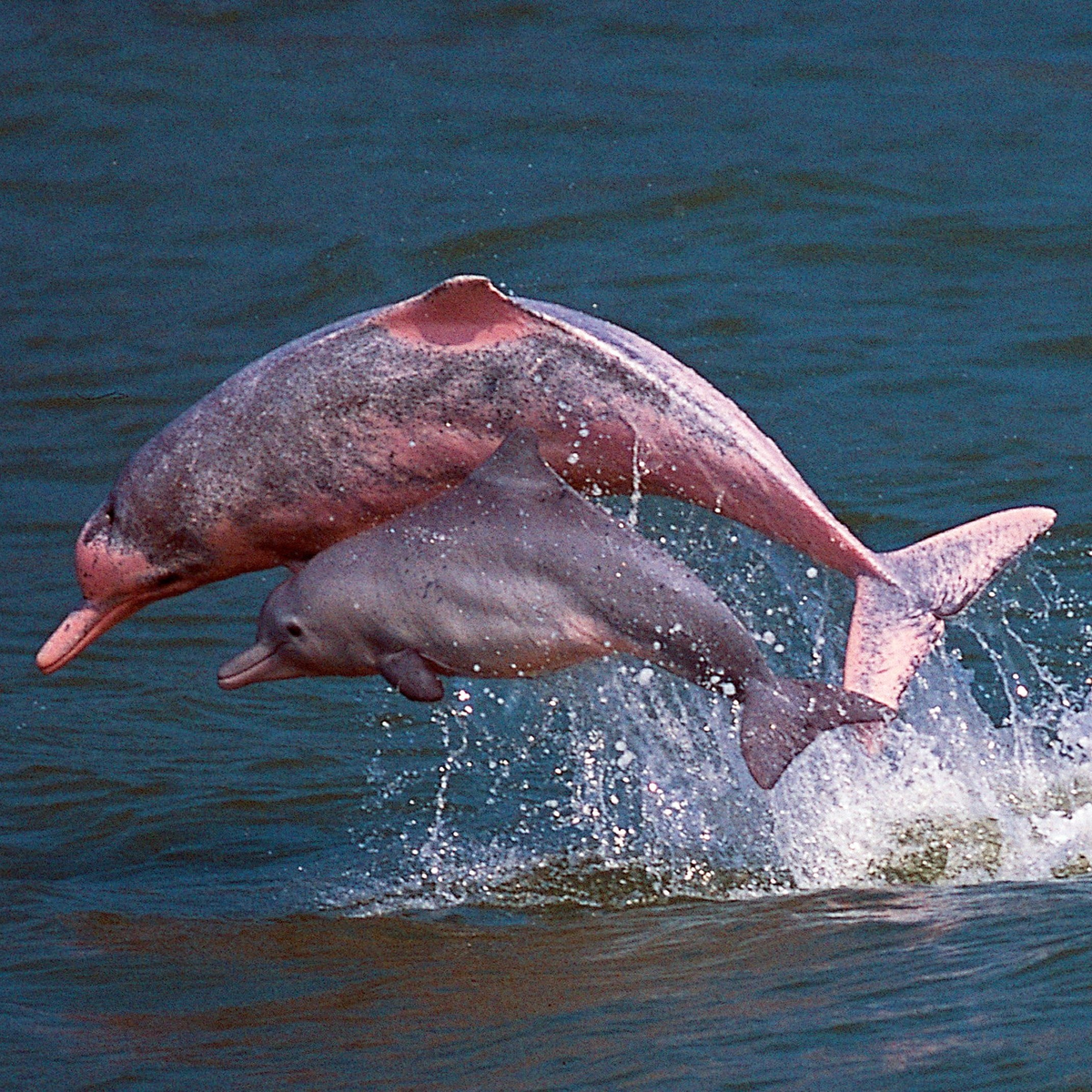Beautiful top predator: 10 interesting facts about the pink dolphin (6 photos)
River dolphins themselves are quite rare animals. Once upon a time they lived in large rivers on different continents, now mainly died out. Their population is more or less preserved only in the Amazon. 
Pink Amazon dolphins are the largest of the river dolphins - they grow up to 2.55 meters in length.
Amazonian dolphins are scientifically called Inia geoffrensis. But they received mass popularity under the name of pink dolphins. AND, indeed, while young animals tend to be grey, with they turn pink with age. And in adults, the belly is light, almost white or pink. 
Unlike marine counterparts, it can turn its head 90 degrees.
Prefers small fish. Can eat up to 12 per day kilograms is about 2.5% of the animal's own weight. Very much love there are catfish and piranhas, although sharp teeth allow them to deal even with turtles.
In hunting, they are rather lazy. Prefer places where the two merge rivers. There the water is muddy, the fish are disoriented. Just open your mouth and Grab the rich fauna of the Amazon! 
Pink dolphins release fountains when they exhale. They can jump up to 1 meter in height.
They swim slowly - no more than 3.2 km / h. But there are cases when they accelerated to 22 km / h. 
Pink dolphins regularly gather in small flocks. They are are sociable and communicate with each other with a wide range of signals. The main ones are echolocation clicks. But pink dolphins can also scream, scream, bark and even whimper.
Be sure to come to the rescue of each other, for example, if some pink dolphin will get stranded. Willingly swim to fishermen's boats and rub against the side. 
Pink dolphins are lucky, because, unlike their marine counterparts in their habitat has virtually no dangerous enemies. They are the highest here. predators. Hence the peculiarities of behavior - pink dolphins are extremely curious. They are interested in almost any foreign object in the river, they are not afraid of anything, but boldly rush to study it.
Males care for females in much the same way as humans. Only instead of flowers, they bring branches or some other interesting objects. Perhaps this is what their curiosity is connected with? Find the best gift for the future bride! 
Children are brought up for a relatively long time. The baby can swim with mother up to three years. She feeds him, teaches him to hunt and protects from enemies, because babies, unlike adults, can be dangerous other predators.
In the wild, they live up to 30 years, although usually much less. AT in captivity live longer - the record holder from the German zoo managed to celebrate your 46th birthday.





















